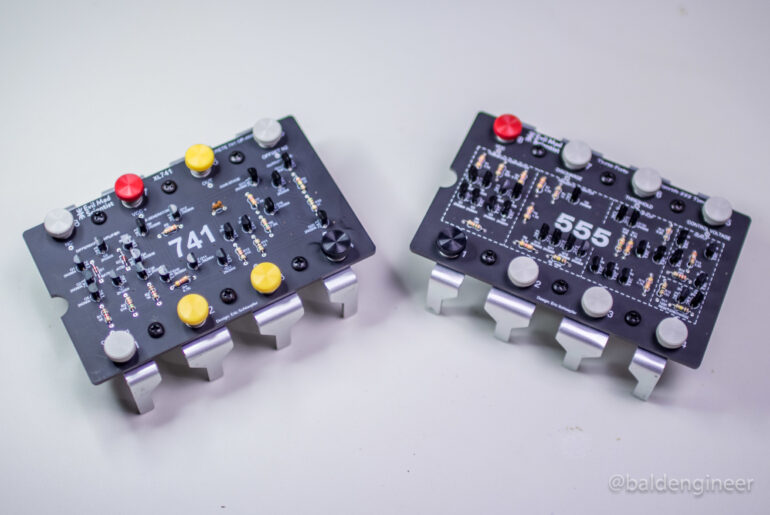<br /> This Addohms Brushed DC Motor Tutorial goes into the third dimension! Using a variety of 3D models, we show you what makes a brushed DC motor, a brushed DC motor. Then, like usual, we break two simple ways to control them with a microcontroller like the Arduino. You can use a single BJT Transistor (remember those from #10?), build your own H-Bridge, or use a popular H-Bridge chip. Brushed DC Motors Show Notes This…
Video Do electrons flow from positive to negative? Or do they flow from negative to positive? This AddOhms tutorial looks at the difference between Conventional Flow and Electron Flow. James also addresses whether or not his drawings are incorrect. Current Flow Direction Show Notes Ben Franklin by Duplessis 20 [via wikicommons] Four Current Flow Myths 68 [via baldengineer.com]
Video Switching regulators make use of the energy storage properties of capacitors and inductors. A transistor, or switch, controls the charging and discharging. This method makes for an efficient regulator but can be difficult to design. Show Notes Here are links to the products mentioned in AddOhms #18: LM3671 Buck Controller from Texas Instruments LM3671 Breakout board from Adafruit PowerBoost 1000 (boost converter) from Adafruit VERTER (buck-boost converter) from Adafruit These are articles related to…
3 Years ago…It’s hard to believe, but only three years ago I posted the first AddOhms Video. The series had a strange start. I tried four different times until I figured out the “whiteboard” style that AddOhms is famous for today.It’s funny because when I go back to the first four episodes, they are hard for me to watch, but continue to be popular. Regardless, I so appreciate the support of Fans and look forward…
The LM7805 is a very popular voltage regulator. Curious about how it works? In this AddOhms Tutorial, we look at what is a Linear Voltage Regulator and how to use them in your circuits. Linear Voltage Regulators Show Notes Related Datasheets LM7805 [Fairchild] NCP1117 [On Semiconductor] PIR Sensor [Adafruit] Interesting Links Written Tutorial on Regulators [Baldengineer.com] TO-220 Information [Wikipedia] TO-220 Heatsink [Adafruit] Choosing the right LDO [All About Circuits]
Using Push-buttons with a microcontroller like an Arduino or Launchpad is made much easier with “Pull-Up Resistors.” See how they work and why you need them in this video tutorial.
https://youtu.be/ocN2oTsYIG8 National Instruments (NI), is probably best known for the LabVIEW software and modular instruments. In the past few years, they have introduced more innovative test and measurement products than any other T&M manufacturer, at least, in our opinion. Their latest box is called the “VirtualBench.” It’s a lab’s worth of equipment in a single box at a reasonable price. It combines a DMM, Oscilloscope, Logic Analyzer, Power Supply, and Function Generator into a single…
https://youtu.be/EQtwsWJuUPs Understanding voltage dividers means understanding Ohm’s Law. A common use for a voltage divider in most projects is to monitor a battery. Say you are powering your circuit with a 9V or 12V battery. Microcontroller boards don’t do well with those voltages. In a future video, we’ll come back and look at more circuits that can use voltage dividers. Episode Notes Correction: There is a mistake around 3:00. I say “91 millivolts” and I should…
https://youtu.be/8ua7dkTLGII A first look at the new Raspberry Pi B+ and some highlights on the differences from the first models. The other day I got an interesting email. It offered me a raspberry pie. The sender claimed it was only a “B+”, but hey, who am I to turn down free pie!? Jokes aside… In this AddOhms episode, I give some first impressions of the new Raspberry Pi Model B+. It isn’t an all-new board,…



